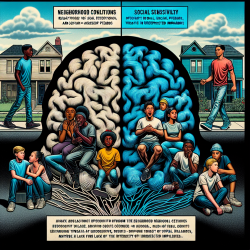As speech-language pathologists, our mission is to deliver effective therapy that creates positive outcomes for children. One way to achieve this is by staying informed about the latest research and integrating its findings into our practice. The study titled The Gradience of Multilingualism in Typical and Impaired Language Development: Positioning Bilectalism within Comparative Bilingualism by Grohmann and Kambanaros (2016) provides valuable insights into multilingualism and its implications for language development and therapy.
Understanding the nuances of multilingualism, especially bilectalism, is crucial for effective assessment and intervention. Bilectalism refers to the use of two closely related dialects, such as Cypriot Greek and Standard Modern Greek, within the same linguistic community. This research highlights several key areas that can enhance our practice:
- Language Proximity: The closeness between the grammars of the languages a child acquires plays a significant role in language development. For instance, bilectal children in Cyprus showed different patterns of clitic placement compared to monolingual or multilingual children, suggesting that the degree of similarity between languages influences linguistic outcomes.
- Executive Control: The study found that bilectal children exhibited executive control abilities similar to multilingual children, but distinct from monolinguals. This suggests that the cognitive benefits often attributed to bilingualism may also apply to bilectalism, impacting how we approach cognitive and linguistic assessments.
- Language Impairment: Children with Specific Language Impairment (SLI) demonstrated similar lexical retrieval issues regardless of whether they were monolingual, bilectal, or multilingual. This finding supports the delayed acquisition hypothesis for SLI and emphasizes the need for tailored interventions that consider the child's linguistic background.
Implementing these findings in clinical practice involves:
- Assessment: Utilize tools and protocols that account for the child's specific linguistic environment, including the degree of language proximity and the presence of multiple dialects.
- Intervention: Develop therapy plans that leverage the cognitive benefits of bilectalism and bilingualism, such as enhanced executive control, to support language development.
- Research: Encourage ongoing research to further explore the impacts of bilectalism and multilingualism on language development and therapy outcomes.
By integrating these insights into our practice, we can better support the diverse linguistic needs of children and enhance their language development outcomes. To read the original research paper, please follow this link: The Gradience of Multilingualism in Typical and Impaired Language Development: Positioning Bilectalism within Comparative Bilingualism.










